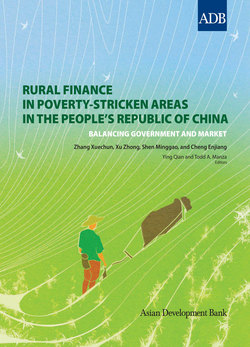Читать книгу Rural Finance in Poverty-Stricken Areas in the People's Republic of China - Xuechun Zhang - Страница 35
На сайте Литреса книга снята с продажи.
Agricultural Bank of China Development Strategy
ОглавлениеThe ABC receives the majority of its deposits from rural areas but lends in both rural and urban areas and, since 1996, has gradually shifted its lending operations more exclusively to urban areas. All rural postal savings deposits originate in rural areas and are redeposited with the PBC. Thus, the ABC and rural postal savings have been blamed for channeling funds from rural to urban areas.
Changes in the ABC’s development strategy include reducing rural staff and offices, weakening the authority of county subbranches, implementing more-stringent lending requirements, and transferring deposited funds with upper-level entities. First, the ABC has made reductions in rural areas. Initially, the ABC enjoyed the advantage of extensive grassroots operational offices in every county and township. Since 2000, however, the ABC has undertaken a reform similar to that of other state-owned commercial banks, focusing on staff reduction, institutional adjustment, risk-control enhancement, and improvement of internal management. It also has cut operational offices, retreating from rural areas and parts of the rural credit market. According to a 2006 survey of selected counties in 29 provinces, from 2000 to mid-2006, the number of operational ABC offices in Shandong Province declined from 2,173 to 1,228 (a 9% decrease per year) and the number of employees decreased from 31,340 to 14,557 (a 12% decrease per year). In Changchun, 58% of the ABC’s operational offices (in rural areas) and savings offices (in urban areas) were dissolved. In Qinghai, the ABC dissolved or merged township operational offices, and no other financial institutions provide credit or lending to farmers or herdsmen.
County subbranches are the lowest management layer, but they have no authority to appoint or remove staff, to budget independently, or to approve loans
Second, the ABC adopted measures to weaken the functions of county subbranches. Thus, due to sharp differences across regions, policy and management decisions made by headquarters usually lag behind or fail to conform to local reality. County subbranches are the lowest management layer, but they have no authority to appoint or remove staff, to budget independently, or to approve loans. For example, lower subbranches and enterprises spend time and effort rating enterprises applying for loans and then submit the results to provincial branches, which conduct examination only on an annual basis. Moreover, according to the president of one county subbranch, it normally takes 1 to 2 months for loan distribution, much longer than loan distribution from urban and rural credit cooperatives. Such an overstretched line of reporting deprives the ABC of good development opportunities.
Third, the ABC raised the threshold of access to loans, focusing on businesses in advantageous industries and enterprises in big cities. ABC’s policy is to serve only clients with credit ratings of 2A and above, abandoning clients rated below 2A and subjecting new clients to credit rating by provincial branches. The ABC employs universal criteria for credit ratings, but some enterprises in less-developed regions have difficulty meeting such requirements and therefore cannot get loans. Some high-quality county enterprises do not appear to be viable when compared with peers at the provincial level, and many enterprises are daunted by the standards.
A PBC survey showed that the interest rate on capital deposited with upper-level entities is much higher than the rate provided by other commercial banks
After 2003, the ABC strengthened control over credit aggregation and intensified collective management of credit, resulting in a worsening capital shortage at the county level. The ABC’s function in rural areas has shifted from supporting rural development by providing loans to taking deposits, providing settlement and intermediary services, and liquidating nonperforming loans. Operational offices below the county level mainly provide settlement, remittance, and other intermediary services; deposit certificate guaranty loans are the bank’s only credit product. At present, grassroots operational offices take deposits but refrain from lending to township enterprises and farmers, except for a few poverty-reduction loans. Thus, the ABC has been transformed from a state-owned commercial bank that mainly targets rural areas to a bank that gradually reduces its presence in the agriculture sector.
Finally, the ABC transfers all collected deposits to upper-level entities and centralizes capital by raising the interest rate on such deposits, resulting in capital outflow from rural areas. A PBC survey showed that the interest rate on capital deposited with upper-level entities is much higher than the rate provided by other commercial banks. For example, in the first half of 2006, the 1-year interest rate on capital deposited with upper-level entities was 3.33%—one-half to one percentage point higher than the interest rate at other commercial banks. This policy encourages county subbranches to deposit their capital rather than lending it, impeding the efficiency of capital utilization in the local area. As a result, the balance sheet of county subbranches is quite unbalanced, with a declining deposit–loan ratio.
Following these major policy shifts, the ABC lost its advantages and now competes with a multitude of financial institutions in large and medium-sized cities. At the same time, certain agriculture loans are more likely to become nonperforming loans. Because it is impossible to get additional loans from the ABC, the bank has become more estranged from its former clients, including enterprises and farmers, and many borrowers are less willing to repay existing loans. This is particularly true of borrowers in certain townships where the ABC has closed down operational offices. As a result, the number of nonperforming loans in county subbranches has skyrocketed in recent years.
